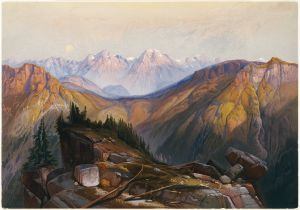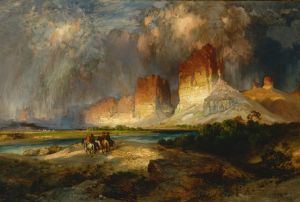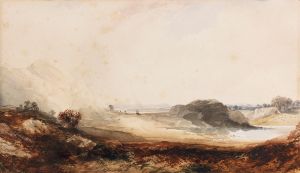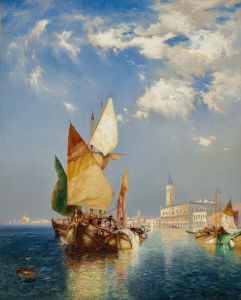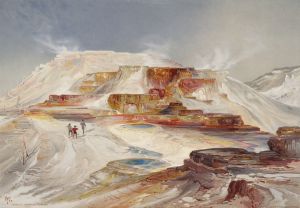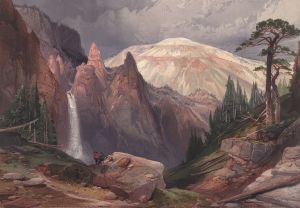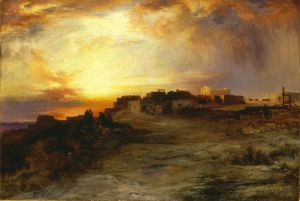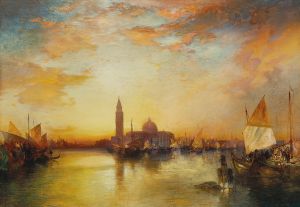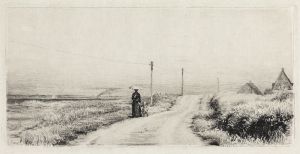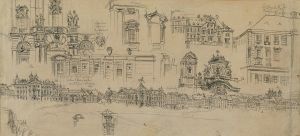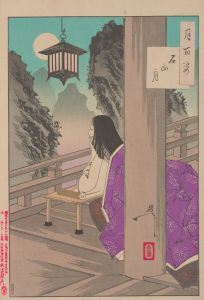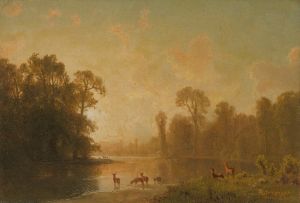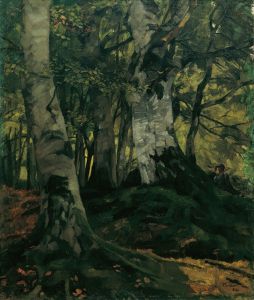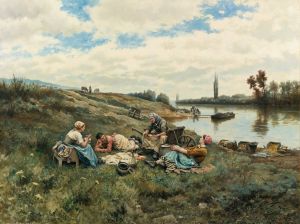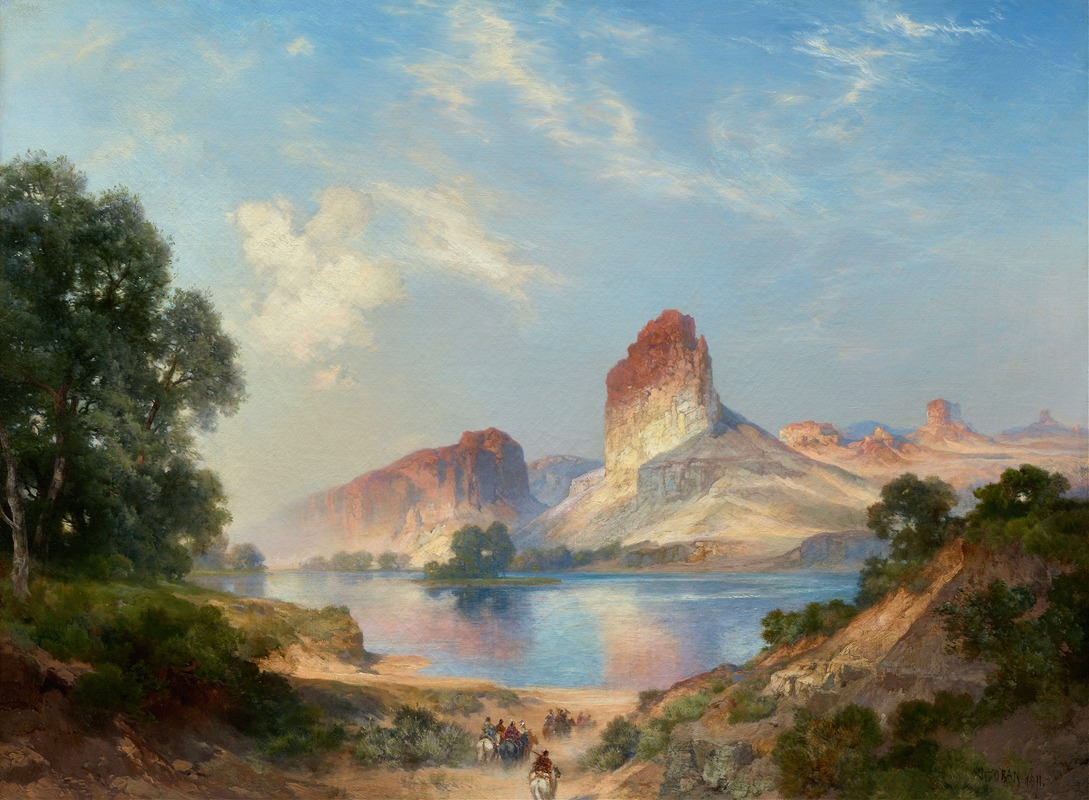
An Indian Paradise
A hand-painted replica of Thomas Moran’s masterpiece An Indian Paradise, meticulously crafted by professional artists to capture the true essence of the original. Each piece is created with museum-quality canvas and rare mineral pigments, carefully painted by experienced artists with delicate brushstrokes and rich, layered colors to perfectly recreate the texture of the original artwork. Unlike machine-printed reproductions, this hand-painted version brings the painting to life, infused with the artist’s emotions and skill in every stroke. Whether for personal collection or home decoration, it instantly elevates the artistic atmosphere of any space.
Thomas Moran's painting "An Indian Paradise" is a notable work by the American artist, renowned for his contributions to the Hudson River School and the Rocky Mountain School of landscape painting. Moran, born in 1837 in Bolton, England, immigrated to the United States with his family in 1844. He became one of the most celebrated landscape painters of the 19th century, particularly known for his depictions of the American West.
"An Indian Paradise" is a testament to Moran's skill in capturing the grandeur and beauty of the American landscape. Although specific details about the creation date and the exact location depicted in the painting are not widely documented, the work reflects Moran's broader artistic themes and interests. His paintings often feature dramatic landscapes, with a focus on the interplay of light and shadow, and a meticulous attention to detail that brings the natural world to life.
Moran's work was heavily influenced by his travels to the American West, particularly his participation in the Hayden Geological Survey of 1871, which explored the Yellowstone region. This experience had a profound impact on his artistic vision, inspiring a series of paintings that played a crucial role in the establishment of Yellowstone as the first national park in 1872. While "An Indian Paradise" may not directly depict Yellowstone, it embodies the spirit of Moran's fascination with the untamed beauty of the American wilderness.
The painting likely showcases a serene and idyllic landscape, possibly featuring elements such as mountains, rivers, and lush vegetation, which are common motifs in Moran's work. His use of vibrant colors and dynamic compositions often evoke a sense of awe and wonder, inviting viewers to appreciate the majesty of nature. Moran's ability to convey the sublime beauty of the landscape made his work popular among art collectors and the general public alike.
Throughout his career, Moran's paintings were instrumental in shaping the perception of the American West as a place of natural beauty and grandeur. His works were exhibited widely and contributed to the growing appreciation for landscape painting in the United States. Moran's legacy as an artist is closely tied to his role in promoting the conservation of natural landscapes through his art.
"An Indian Paradise," like many of Moran's works, serves as a visual celebration of the natural world, capturing the imagination of viewers and encouraging a deeper appreciation for the environment. While specific details about the painting's provenance and exhibition history may be limited, its significance lies in its representation of Moran's artistic vision and his contribution to American landscape painting.
In summary, Thomas Moran's "An Indian Paradise" is a reflection of the artist's enduring legacy as a master of landscape painting, celebrated for his ability to capture the beauty and majesty of the American wilderness. Through his work, Moran continues to inspire admiration for the natural world and its preservation.





